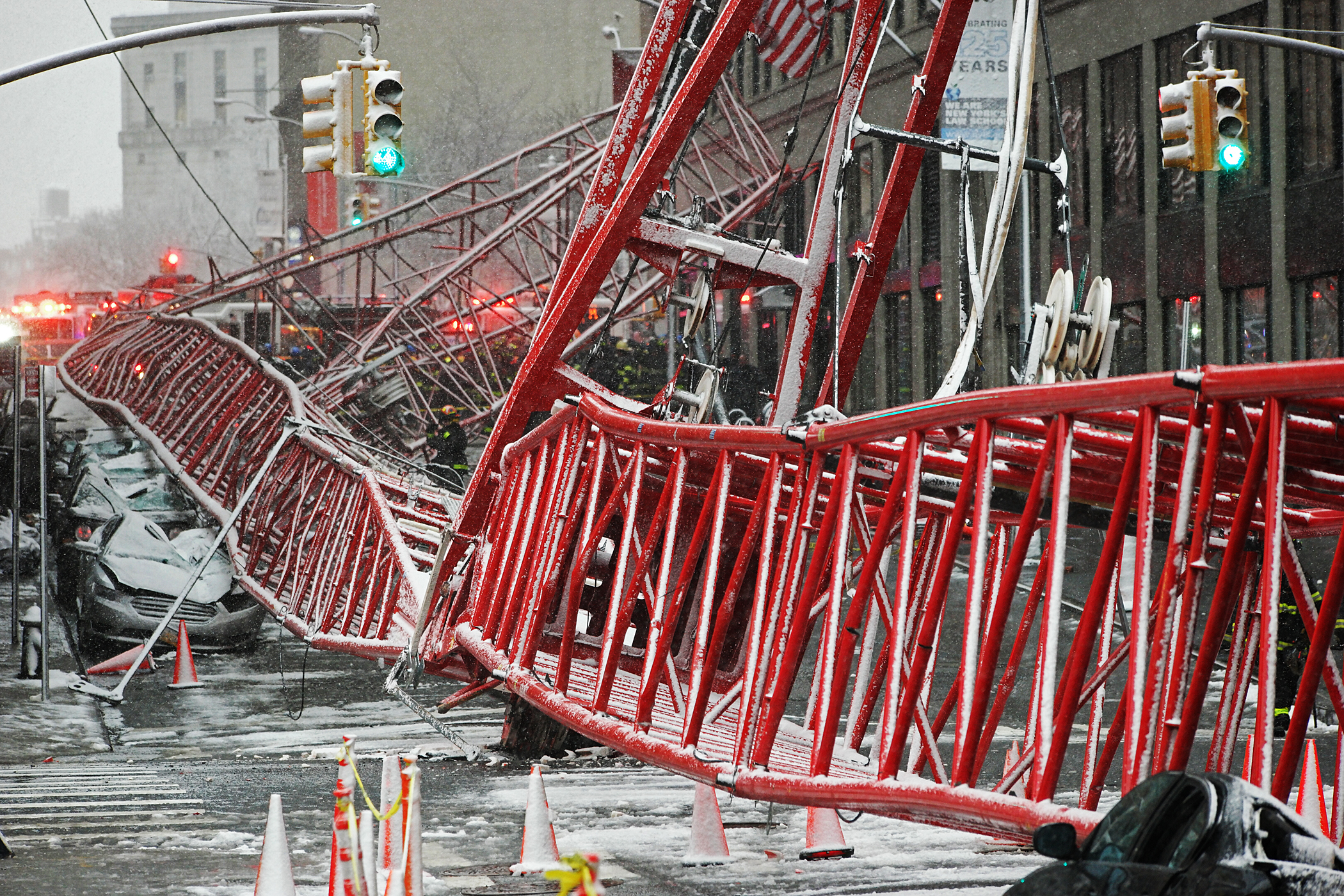
The city has faulted the crane operator in the February collapse in Tribeca that killed one man and injured three other people.
BY COLIN MIXSON
An investigation by the Department of Buildings has concluded that the fault for the deadly Tribeca crane collapse last February falls squarely on the shoulders of its operator, who failed to batten down the machine on the night before the crash, before lowering its main boom at an improper angle prior to its harrowing fall.
The agency has temporarily suspended the man’s license to work as a crane operator, and will take the additional step of advocating that the Office of Administrative Trials and Hearings move to revoke his privilege to operate cranes on a permanent basis, according to the city’s chief buildings honcho.
“The crane operator involved in this incident acted recklessly, with tragic results,” said buildings commissioner Rick Chandler. “The actions we’re taking should send the message to everyone in the construction industry that safety must come first.”
The city’s findings follow a separate investigation conducted by the U.S. Labor Department’s Occupational Safety and Health Administration released in September, which nailed contractor Galasso Trucking and Rigging with two violations related to the deadly crash, carrying fines totaling $22,448.
Specifically, the federal investigators found that Galasso failed to react to the severe wind gusts blowing at the time of the accident, and that the hoist’s boom was lowered below the 75-degree limit specified by the manufacturer. Operators had dropped the boom to a parlous 69.4-degree angle before it fell over on Feb. 5, killing one man and injuring three other people.
The DOB’s action is specifically against the crane’s operator, who was in the cab controlling the machine of the day of the accident, according to an agency spokesman. The city has not yet taken any actions against Galasso, the he said.
During an interview with the Department of Buildings on May 16, the crane operator, Kevin Reilly, described the moment when, as he was attempting to place the crane in a “Jack Knife” position, it began to topple.
“As I turn around, I feel the machine move,” Reilly told the DOB, according to the city’s investigation report. “I look back out the window, and the f*****g thing [sic] coming up. So I try to luff back, and it just went down.”
In addition to claiming the life of Upper West Side mathematician David Wichs, the collapse seriously injured three other bystanders in its plummet onto Worth St. between West Broadway and Church St.
The DOB is currently in the process of implementing 23 recommendations that a technical working group formed by Mayor de Blasio released in June in response to the collapse.
The new rules include:
• Requiring mobile cranes to be fitted with wind measuring devices, called anemometers, which record real-time wind readings.
• Requiring contractors to hire “on-site lift coordinators” with the authority to shutdown crane operations in the event of unsafe conditions.
• Restricting mobile crane operations whenever winds exceed 30-miles per hour.
• Requiring crane operators to secure cranes when not in use as per a specified “wind-action plan,” which includes retracted, jackknifed, and laid-down positions.

















